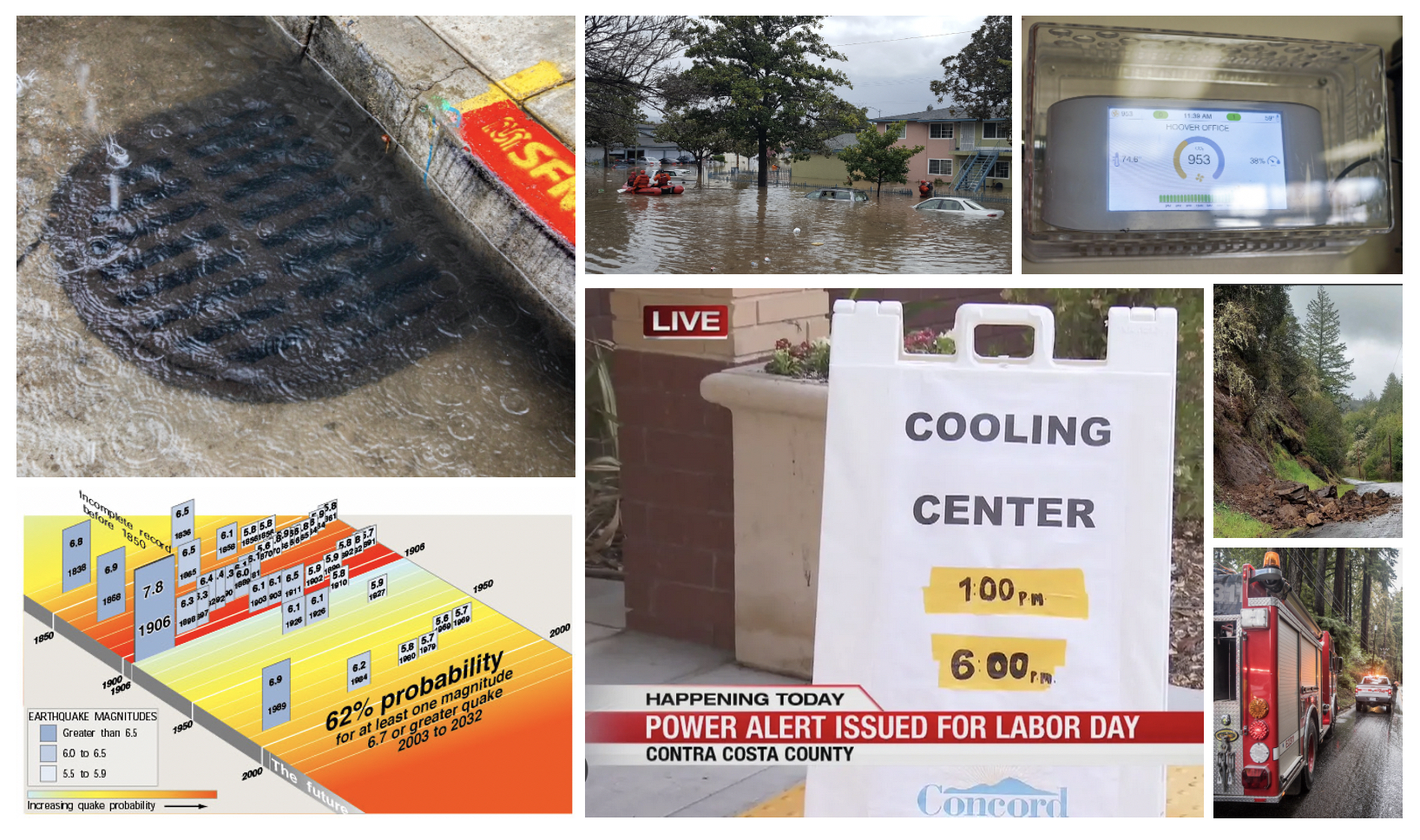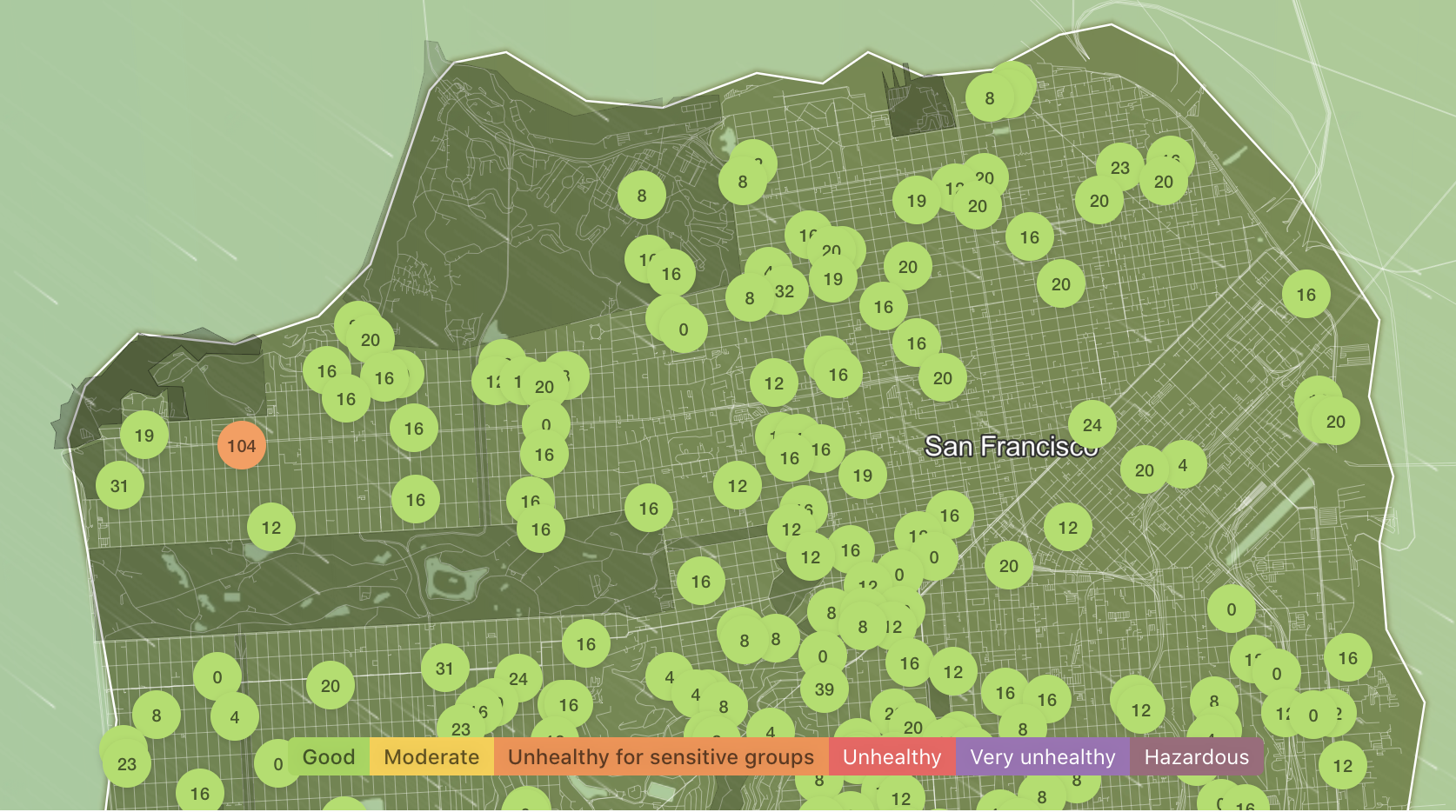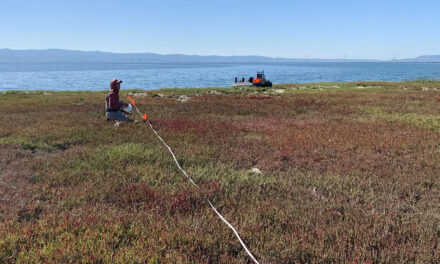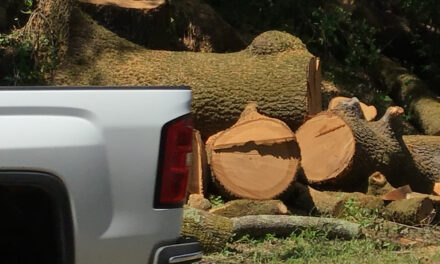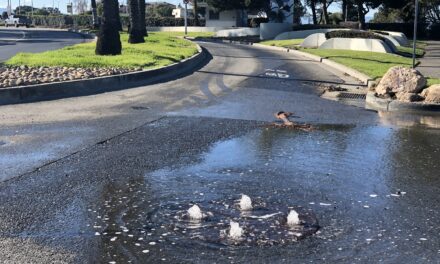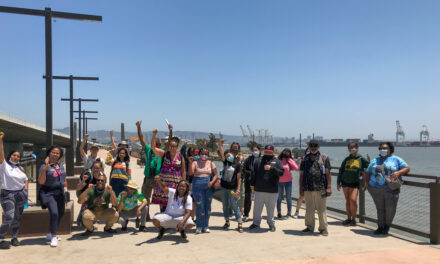Finding the Throughline in Multi-Hazard Planning
Not so very long ago, certainly within the memory of most millennials, all that the Bay Area really had to fear from Mother Nature was the occasional earthquake. Terrifying when they occurred, certainly, but blessedly infrequent. The rest of the time we could all look smugly to the East, where our fellow citizens regularly contended with blizzards, tornados, hurricanes, and more.
Not anymore. Thanks to the changing climate, the Bay Area now faces increasingly frequent threats from flooding, heat, wildfire and smoke. As the hazards multiply, communities, local governments, and agencies are searching for ways to address them more holistically.
“The ways you build resilience is oftentimes similar for different types of hazards,” says Matt Wolff, of San Francisco Department of Health’s Climate and Health Program. Wolff co-leads the city’s Heat and Air Quality Resilience Project, which brings together public, private, community and academic stakeholders to develop extreme heat and wildfire smoke resilience strategies. The incidence of both hazards is increasing, and Wolff notes that the strategies for dealing with one are often effective for the other.
“It’s about protecting people from outside exposures,” he says, “focusing on building envelopes, for example, and making sure they protect against both heat and smoke. We are looking at how many co-benefits there are to any particular solution.”
IQ air quality index for San Francisco on October day.
“If you just look at each hazard one at a time, you miss a lot of opportunities,” says Matt Chadsey of Nonlinear Ventures, who consulted on a new report for the Bay Area Regional Collaborative that analyzes the climate adaptation activities of its member agencies. “The problems have been looked at in silos to some degree—coastal flooding issues and sea level rise separate from wildfire separate from air quality, and so forth. One of the things that’s pretty clear is that the more we can look at things holistically, from a community perspective, the more we increase the likelihood of collaboration, of innovative thinking, potentially more funding coming in.
The BARC report is a first step towards the development of a regional multi-hazard adaptation plan and a technical assistance program, according to BARC’s Allison Brooks. In addition to mapping the BARC member agencies’ existing adaptation efforts, as well as the relationships and resources that support them, and fitting them into the bigger picture of Bay Area adaptation, the report identifies gaps and challenges in the region’s approach to adaptation. It also assesses the technical assistance available to stakeholders, and explores opportunities for improving it.
Multihazard adaptation means more than just preparing for disasters, says Chadsey. “It’s taking a step back and looking at the whole, both the natural and the social system of the community and really addressing everything together,” he says . “It’s really trying to understand how equity and diversity play, and how local jobs and the local economy play in the actual risk mitigation activities, because there are a lot of opportunities to do more to make a healthier community overall.”
BARC is a funder of KneeDeep Times.
Other Recent Posts
Learning the Art of Burning to Prevent Wildfire
In Santa Rosa’s Pepperwood Preserve, volunteers are learning how controlled fires can clear out natural wildfire fuel before it can spark.
Martinez Residents Want More Than Apologies — They Want Protection
After a 2022 release of toxic dust and a February 2025 fire, people in the northeast Bay town are tired of waiting for safety improvements.
Weaving Fire Protection Out Of What’s Already There
A new Greenbelt Alliance report shows how existing vineyards, grasslands, and managed forests can slow wildfire and save vulnerable homes.
Fall Plantings Build Pollinator Habitats in Concord
Community groups, climate advocates and a church are coming together to plant pollinator gardens as monarchs, bees see population declines.
Newark Needs Housing, But Could Shoreline Serve A Higher Purpose?
The Bay Area needs more affordable housing, but would 196-homes or a buffer against sea level serve local needs better in the years ahead?
Who Will Inherit the Estuary? Training for a Rough Future
The six-month program teaches students aged 17 -24 about the challenges facing communities around the SF Estuary, from Stockton to East Palo Alto.
Split Verdict Over State of the Estuary
Habitat restoration and pollution regulations are holding the Bay steady, but the Delta is losing some of its ecological diversity, says SF Estuary Partnership scorecard.
Volunteers Catch and Release Tiny Owls For Science
In Santa Rosa, citizen scientists capture northern saw-whet owls to help further research on climate impacts to the bird.
Antioch Desalination Plant Could Boost Local Water Supply
The $120 million plant opened this fall and treats 8 million gallons of brackish water a day, 75% of which is drinkable.
How Cities Can Make AI Infrastructure Green
Data centers fueling AI can suck up massive amounts of energy, water and land, but local policies can mitigate the impact.






